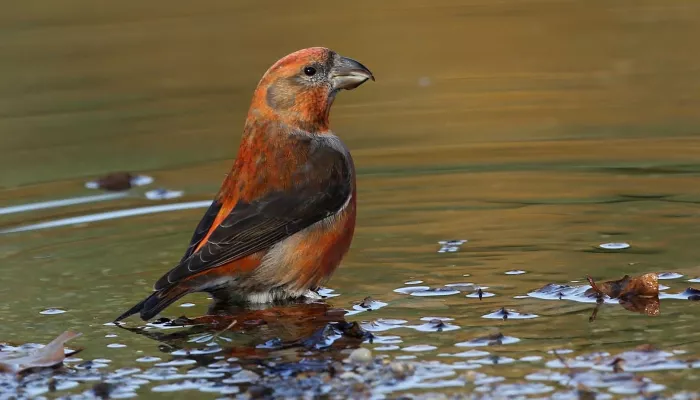| Statistics | |
|---|---|
| Length: | 16cm |
| Wingspan: | 29cm |
| Weight: | 43g |
| Average Lifespan: | 2 years |
As it names suggests, the common crossbill has a large bill that is crossed at the tip - perfect for picking the seeds out of pine cones. Look for it in conifer woodlands, mainly in the north and south.
About
The common crossbill is a large finch of conifer woodlands, so-named for its bizarre, cross-tipped bill, which it uses to prise out and eat the seeds from pine cones. It feeds by flying from cone to cone, and can often be seen in larges flocks near the treetops, although it regularly comes down to pools to drink. It is resident all year-round, but some years 'irruptions' occur when it becomes widespread and numerous as it is joined by continental birds looking for food and which may stay to breed. Common crossbills nest in conifer trees, constructing small cups out of twigs and moss, and lining them with hair.
How to identify
The common crossbill is difficult to spot as it spends most of its time at the top of pine trees. It has a distinctive crossed bill and forked tail; males are brick-red, females olive-green, with a yellow rump. Two similar species include the parrot crossbill, which is slightly larger with a heavier bill, and the Scottish crossbill, which is endemic to scots pine woods in Scotland and has a slightly smaller bill.
Did you know?
Common crossbills nest very early in the year, hatching their chicks in February and March to take advantage of the new crop of pine cones. They have even been known to breed all year-round when there are good cone crops.

